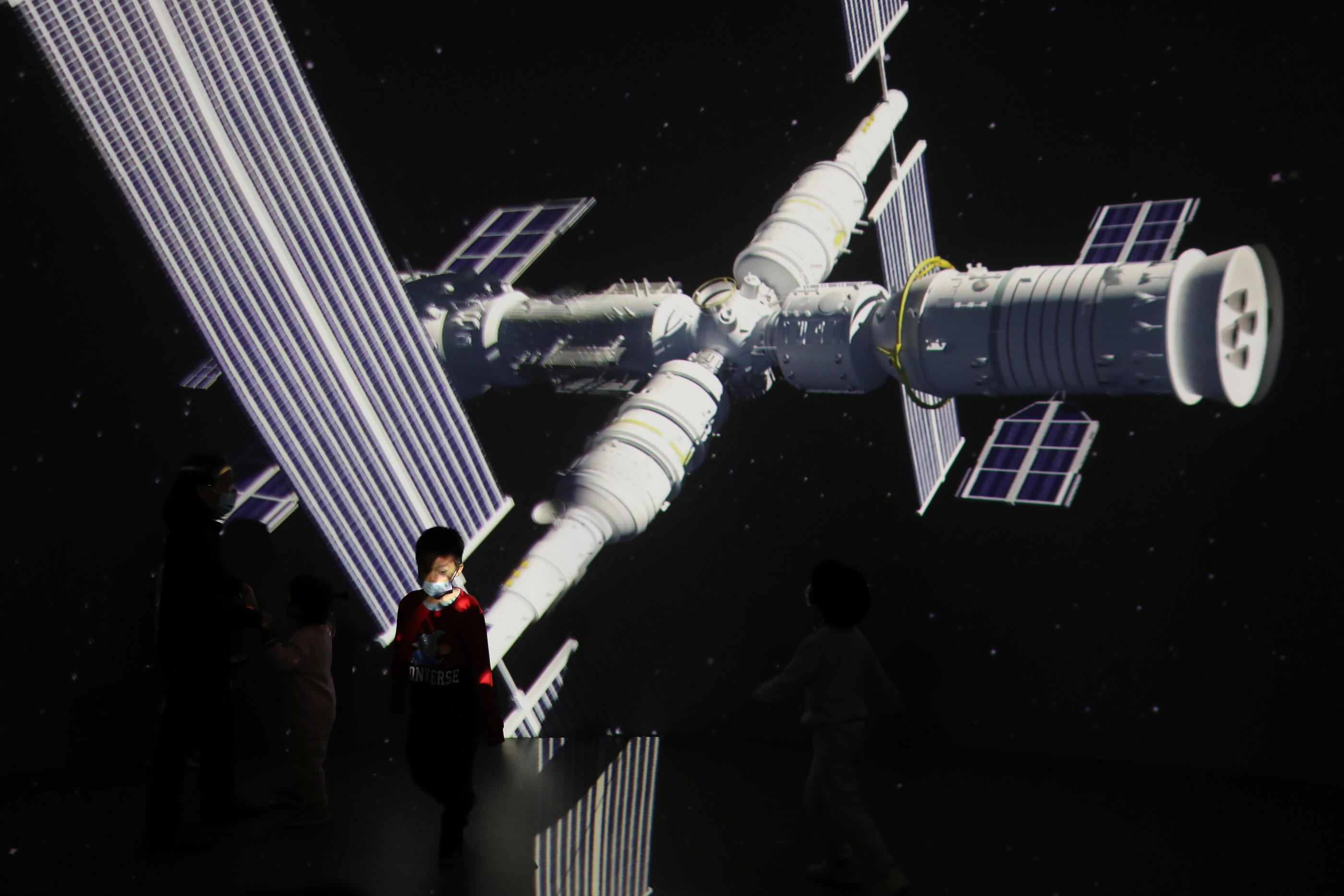Thursday, the ISS, the International Space Station where Thomas Pesquet is currently working, will no longer be alone.
On the night of Wednesday to Thursday, a Long March rocket must take off to place Tianhe, the base module of a Chinese space station in orbit, soon to welcome continuous taikonauts.
The firing will take place at 5:18 am (French time), from Wenchang, in the province of Hainan.
A shot that inaugurates a sustained rhythm of launches.
Starting with a first cargo flight on May 20. It will be followed by the arrival in the station on June 10 of three men who should stay there for as many months, before other crews settle there longer. At the end of 2022, the taikonauts will take turns and the presence will be permanent. “It's been an important streak in a year and a half. It's a big challenge for China. It has never undertaken manned flights with such a rate. They are not going to be unemployed, ”comments Philippe Coué, independent researcher and author.
So far, China had put into orbit two ephemeral stations now fallout, Tiangong-1 and Tiangong-2, and launched six manned missions.
“They took small steps there as they always do.
Except that since the arrival of Xi Jinping [Editor's note: the Chinese president since 2013], there are probably decisions that have been taken to speed up the space program.
They are now starting to show the extent of what they want and what their ambition is.
But the station is a decision that was taken probably at the end of the 1990s. "
Mir more spacious
From the outside, Tianhe bears a striking resemblance to the base module of Mir, the Russian station that gravitated around Earth between 1986 and 2001. “When the decisions were made on manned flights, the Chinese watched what worked. There was no ISS yet, the shuttle seemed complicated to do. The only station they could draw inspiration from was Mir. They said to themselves: this is working, so we are going to do it. As usual, they reinvented the Chinese way, looking at the features that have proven their reliability, doing something that more meets the state of the art of the moment and their needs ”, continues the author of the book Shenzhou, The Chinese in Space (Editions L'Esprit du Temps).
China's Tianhe, the core module of its new space station;
and the USSR's DOS-7 (Mir), core module of its 1980s space station, for comparison pic.twitter.com/MQO9lN1iGC
- Jonathan McDowell (@ planet4589) April 26, 2021
Also, inside, the Chinese seem to have thought of a more modern and more spacious layout, according to an artist's view broadcast in recent months on CCTV, China's Central Television.
“This image confirms that the rest cells are located in the narrow front part of the module, while the large diameter part only includes racks [Editor's note: cabinets] both for piloting and management of the station and to do science very quickly, ”explains Philippe Coué.
An artist's view of the Tianhe module, broadcast by the Chinese channel CCTV.
CCTV
Cooperation or hegemony?
The obvious objective of this Chinese Space Station, CSS, sometimes called Tiangong-3 or simply Tiangong, is to supplant the ISS, from which NASA wishes to gradually disengage.
Does China wish to exercise hegemony in low orbit or will it open up to cooperation with the West?
The European Space Agency (ESA) appears to see opportunities for its astronauts, many of whom trained in China and learned Mandarin.
China marks its Space Day
Visit of a copy of the Tianhe module, at the Beijing Science and Technology Museum, April 24, 2021. REUTERS / Tingshu Wang TINGSHU WANG
For Philippe Coué, the question arises of the use of Tianhe's “twin”. Because the central "brick" of CSS has been designed in duplicate, a common practice. “There are plans which show a doubling of the station, with a central body number two which would connect to the first. The Chinese say the second would be to accommodate foreign modules. Unless China decides to put a second independent module to make a second station, simply for prestige, to say: we have two. The probability is not zero. "

